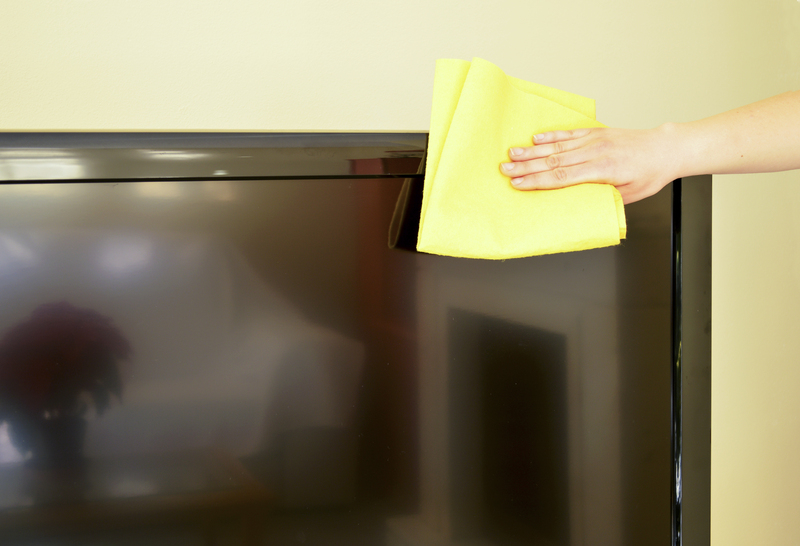Eco-Savvy Maintenance for Workspaces
Introduction
In today's world, sustainability is not just a buzzword but a crucial aspect of daily operations, especially in business environments. Workspaces, in their myriad forms, consume significant amounts of resources ranging from electricity to office supplies. Adopting eco-savvy maintenance practices can reduce the environmental footprint, enhance the well-being of employees, and even cut costs. This article delves into practical, comprehensive, and effective strategies to maintain workspaces with eco-friendliness in mind.

Energy Efficiency
Effective energy management is paramount for eco-savvy maintenance. By targeting energy consumption, a workspace can significantly reduce its environmental impact.
Smart Lighting Solutions
Transitioning to LED lighting is one of the simplest steps. LEDs consume less power and have a longer lifespan than conventional bulbs. Additionally, smart lighting systems, which include sensors that adjust lighting based on occupancy and natural light, can cut energy usage dramatically.
Energy-Efficient Devices
Investing in energy-efficient office equipment such as computers, printers, and HVAC systems can also contribute to substantial energy savings. Look for ENERGY STAR-rated products that meet strict efficiency guidelines.
Energy Audits
Conduct regular energy audits to identify areas where energy efficiency can be improved. These audits can provide insights into potential upgrades or behavioral changes that can further reduce energy consumption.
Sustainable Waste Management
Waste management is another critical area where eco-savvy practices can make a substantial impact. By implementing effective waste management strategies, workspaces can minimize their landfill contributions and promote recycling and upcycling initiatives.
Reduce, Reuse, Recycle
Encourage employees to minimize waste by adopting the 'Reduce, Reuse, Recycle' mantra. Provide adequate recycling bins and ensure they are clearly marked and conveniently located. Educate staff about the importance of recycling and how to do it correctly.
Composting Organic Waste
Set up a composting system for organic waste such as food scraps and coffee grounds. This not only reduces the waste going to landfills but also creates nutrient-rich compost that can be used for office plants or donated to community gardens.
Electronic Waste Management
Properly manage electronic waste by partnering with certified e-waste recyclers. These recyclers ensure that electronic devices are disposed of in an environmentally friendly manner, preventing harmful chemicals from contaminating the environment.
Water Conservation
Water is a precious resource that is often taken for granted in workspaces. Implementing water-saving measures can contribute to a more sustainable office environment.
Fix Leaks Promptly
Even minor leaks can result in significant water wastage over time. Regularly inspect plumbing fixtures and repair any leaks promptly to conserve water.
Install Low-Flow Fixtures
Replace old faucets, toilets, and showers with low-flow fixtures. These fixtures use less water without compromising functionality and can lead to substantial water savings.
Water-Efficient Landscaping
If your workspace includes outdoor areas, consider xeriscaping--a landscaping method that reduces or eliminates the need for irrigation. Using native plants that require little water can significantly cut down on outdoor water usage.
Indoor Air Quality
Good indoor air quality is essential for the health and well-being of employees. Eco-savvy practices can help maintain a clean and fresh indoor environment.
Use Natural Cleaning Products
Many commercial cleaning products contain harmful chemicals that can degrade air quality. Switch to natural, non-toxic cleaning products to keep the air pure and free from pollutants.
Improve Ventilation
Ensure that the workspace is well-ventilated. Use air purifiers and regularly maintain HVAC systems to ensure they are free from dust and contaminants. Opening windows when weather permits can also improve air circulation.
Introduce Indoor Plants
Indoor plants not only enhance the aesthetic appeal of a workspace but also improve air quality by absorbing pollutants and releasing oxygen. Choose varieties like spider plants, snake plants, and peace lilies for the best results.
Sustainable Office Supplies
The choice of office supplies can greatly affect a workspace's environmental impact. Opt for sustainable alternatives to create a more eco-friendly office environment.
Recycled Paper Products
Switch to recycled paper for printing and other office needs. Encourage double-sided printing to reduce paper usage further and set printers to default to duplex printing.
Eco-Friendly Writing Instruments
Choose pens and pencils made from recycled materials or those that are refillable. This reduces plastic waste and conserves resources.
Sustainable Furniture and Decor
Select office furniture made from sustainable materials like reclaimed wood or recycled metal. Consider investing in furniture that is durable and designed to last, reducing the need for frequent replacements.

Encouraging a Green Culture
Creating an eco-savvy workspace goes beyond implementing practical measures. Fostering a culture of sustainability within the organization is vital for long-term success.
Employee Education and Engagement
Educate employees about the importance of sustainability and how they can contribute. Regular training sessions, workshops, and informational materials can help build awareness and encourage eco-friendly behaviors.
Green Initiatives and Incentives
Launch green initiatives such as carpooling programs, bike-to-work schemes, and remote work options. Offer incentives for employees who actively participate in these initiatives, making it easier and more appealing for them to adopt sustainable practices.
Conclusion
Embracing eco-savvy maintenance practices for workspaces is not only good for the environment but also beneficial for the organization. From energy efficiency and waste management to water conservation and indoor air quality, there are numerous ways to create a sustainable office environment. By making thoughtful choices and fostering a culture of sustainability, businesses can reduce their environmental impact and promote a healthier, more efficient, and more productive workspace.



